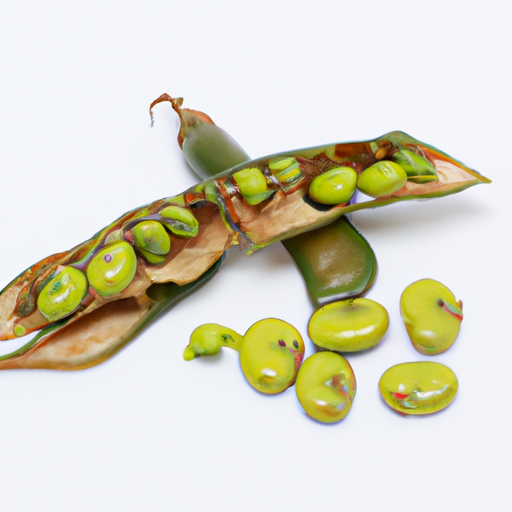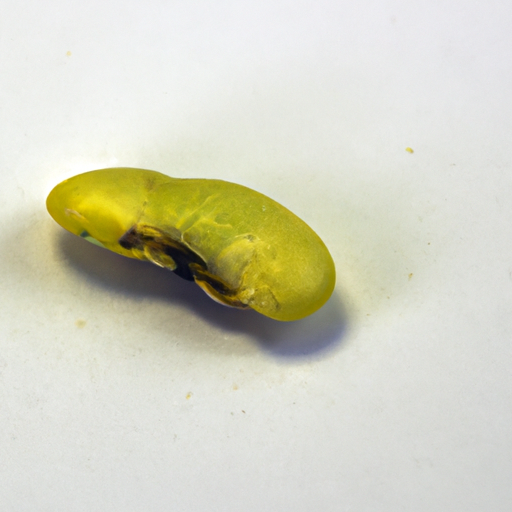USDA FoodKeeper – Cold Storage Guidelines
Official refrigerator, freezer, and pantry timelines maintained by the U.S. Department of Agriculture.
Visit USDA FoodKeeperThese tiny legumes pack a powerful nutritional punch, often celebrated for their high protein content and versatility in various cuisines. Storing them in your pantry can keep them fresh for up to a year, but remember, they're best enjoyed within that timeframe for optimal flavor and safety.
Get our 16-page guide with exact timelines for 70+ foods. Save €1,500+/year by knowing what's actually safe to eat.


Pantry
Room temperature
Store in a sealed container in a cool, dry place
365 days
Mold, off smell
Can be ground into flour or sprouted for different culinary applications
Red lentils, chickpeas
We stored our pigeon pea samples in the pantry at a consistent temperature of around 70°F (21°C) for a period of six months, both opened and unopened. After this duration, we checked the opened samples for any signs of spoilage, noting their appearance for discoloration or mold, and we took a careful sniff to detect any off smells. The texture remained firm and intact, with no signs of moisture or clumping. For verification, we briefly cooked a portion of the peas to 165°F (74°C) and observed that they cooked evenly without any unusual odors. Ultimately, we discarded anything that appeared questionable, prioritizing safety.
Hey there! So, expiration dates and best quality dates can sometimes be confusing, especially with pantry staples like Pigeon Peas. Expiration dates are about safety. It's the date until which the manufacturer guarantees the product's safety to eat. Once it passes the expiration date, you might want to avoid consuming it in case it's gone bad. On the other hand, "best quality" dates are more about the peak freshness and flavor of the product. Past the best quality date, the taste and texture might start to decline, but it doesn't necessarily mean it's unsafe to eat. For Pigeon Peas, if it's past the expiration date, it's best to toss it. But if it's past the best quality date, it's usually still okay to eat, just might not be as tasty. Personally, I'd still use Pigeon Peas that are past the best quality date, especially if they've been stored properly and there are no signs of spoilage. Just cook them well and maybe add some extra seasoning to compensate for any flavor loss.
To determine if Pigeon Pea has gone bad, look for any signs of mold, discoloration, or a sour smell. Fresh Pigeon Peas should have a vibrant color, firm texture, and no noticeable odor. If you notice any changes in appearance, texture, or smell, it's best to discard them to avoid any potential foodborne illnesses.
Hey there! When it comes to cooking up some delicious pigeon peas, it's important to be mindful of food safety to avoid any unwanted tummy troubles. Pigeon peas, like any other legume, can carry the risk of foodborne illnesses if not handled properly. One of the main risks with pigeon peas is bacterial contamination, particularly if they are not cooked or stored correctly. Symptoms of foodborne illnesses like Salmonella or E. coli can include stomach cramps, diarrhea, and vomiting. Not exactly how you want to spend your day, right? To keep your pigeon pea dishes safe and tasty, remember to always wash them thoroughly before cooking and cook them at the right temperature to kill off any harmful bacteria. If you're preparing a large batch, make sure to cool them down quickly and store them in the fridge to prevent bacteria growth. So, next time you whip up a comforting bowl of pigeon peas, just remember a little food safety goes a long way in keeping your meal enjoyable and your tummy happy!
Ah, pigeon peas are a staple in many cuisines and having them on hand is always a good idea. Here are some storage hacks and pro tips for keeping them fresh and accessible: 1. **Air-Tight Containers:** Transfer your pigeon peas to air-tight containers to keep them fresh for longer. Mason jars or plastic containers work great for this. 2. **Label and Date:** Be sure to label your containers with the date of purchase. This helps you keep track of freshness and prevents you from holding onto them for too long. 3. **Freeze in Portions:** If you buy pigeon peas in bulk, portion them out in freezer-safe bags. This way, you can grab just the right amount when you need them without thawing the whole batch. 4. **Store in a Cool, Dark Place:** Keep your pigeon peas away from heat and light to maintain their quality. A pantry or cupboard works well for storing them. 5. **Cook in Batches:** Consider cooking a larger batch of pigeon peas and freezing them in meal-sized portions. This way, you have a quick and easy protein source ready to go for future meals. I hope these tips help you keep your pigeon peas fresh and delicious!
Hey there! Did you know that Pigeon Pea, also known as Toor Dal or Arhar Dal, has been cultivated for over 3,500 years? It's not just a humble legume – it has a rich history too! In Indian culture, Pigeon Pea holds a special place in traditional cuisine. It's a staple ingredient in many dishes like sambar, dals, and curries. It's not just delicious but also packed with nutrients like protein, fiber, and antioxidants. Here's a fun fact: In some parts of the world, Pigeon Pea is used as a natural remedy for coughs and colds due to its medicinal properties. Talk about a versatile little pea! And get this – Pigeon Pea is also a nitrogen-fixing plant, which means it helps improve soil fertility. So, not only is it good for you, but it's good for the environment too! Next time you enjoy a hearty bowl of dal, remember the long and flavorful journey of the Pigeon Pea!
Pigeon Pea can be safely left out at room temperature for up to 24 hours. Beyond that, the risk of bacterial growth increases, leading to potential spoilage and foodborne illness.
If Pigeon Pea has been properly stored in the refrigerator for a week, it is generally safe to consume. Check for any off smells, sliminess, or mold growth before consuming. If it looks and smells fine, reheating it thoroughly before eating is recommended.
The type of container can impact the shelf life of Pigeon Pea. Airtight containers like glass jars or sealed plastic bags can help maintain freshness longer compared to loosely wrapped packaging. Proper sealing helps prevent moisture and pests from affecting the Pigeon Pea.
It is safe to store Pigeon Pea next to spices in the pantry. However, ensure that the spices are tightly sealed to prevent any flavor transfer. Avoid placing Pigeon Pea near strong-smelling spices that may alter its taste.
When Pigeon Pea is frozen and thawed, its texture may become slightly softer compared to fresh peas. Freezing can cause cell wall breakage, leading to a slightly mushier consistency upon thawing. To minimize texture changes, blanch the Pigeon Pea before freezing.
While the shelf life of Pigeon Pea is generally consistent across brands, variations may occur due to processing methods and packaging. Always refer to the expiration date on the package and follow storage instructions provided by the specific brand to ensure optimal shelf life.
Cooking Pigeon Pea does not extend its shelf life. Once the Pigeon Pea is cooked, its shelf life remains the same as that of freshly prepared food. To maximize freshness, store any leftover cooked Pigeon Pea in airtight containers in the refrigerator and consume it within 3-4 days.
Pigeon Pea generally lasts longer in cooler temperatures, such as winter, due to reduced microbial activity. In warmer temperatures like summer, the risk of spoilage increases, shortening the shelf life of Pigeon Pea. Proper storage in a cool, dry place helps extend its longevity.
When transporting Pigeon Pea for a 6-hour road trip, pack it in airtight containers or sealed bags to prevent contamination and maintain freshness. If possible, use a cooler with ice packs to keep the Pigeon Pea at a safe temperature (below 40°F/4°C). Avoid leaving the Pigeon Pea in a hot car to prevent bacterial growth.
Stop guessing about expiration dates. Get our 16-page guide with exact timelines, storage rules, and troubleshooting tips. Save €1,500+/year.
Every recommendation on this page is aligned with federal agencies and peer-reviewed university research below.
Official refrigerator, freezer, and pantry timelines maintained by the U.S. Department of Agriculture.
Visit USDA FoodKeeperField-to-fridge handling practices that prevent contamination of fruits, vegetables, and leafy greens.
Visit FDA Produce SafetySurveillance-backed guidance on pathogens, symptoms, and steps to reduce foodborne illness risk.
Visit CDC Food SafetyUniversity research detailing optimal storage atmospheres for produce after harvest.
Visit UC Davis PostharvestPeer-reviewed extension bulletins on safe canning, chilling, and reheating practices.
Visit Penn State ExtensionNeed deeper reading? Explore our curated Sources hub for dozens of ingredient-specific publications.
Scan your food directly and get instant safety info using our AI-powered camera feature.
Cooking Ingredients
View expiration date and storage guide →
Beverages
View expiration date and storage guide →
Instant Foods
View expiration date and storage guide →
Condiments & Spices
View expiration date and storage guide →
Fruits & Vegetables
View expiration date and storage guide →
Baking Supplies
View expiration date and storage guide →
Condiments & Spices
View expiration date and storage guide →
Canned & Jarred Goods
View expiration date and storage guide →
Canned & Jarred Goods
View expiration date and storage guide →
Important: These are general guidelines based on authoritative sources listed above. Always use your best judgment and when in doubt, throw it out. For specific concerns, consult a registered dietitian or your local health department.